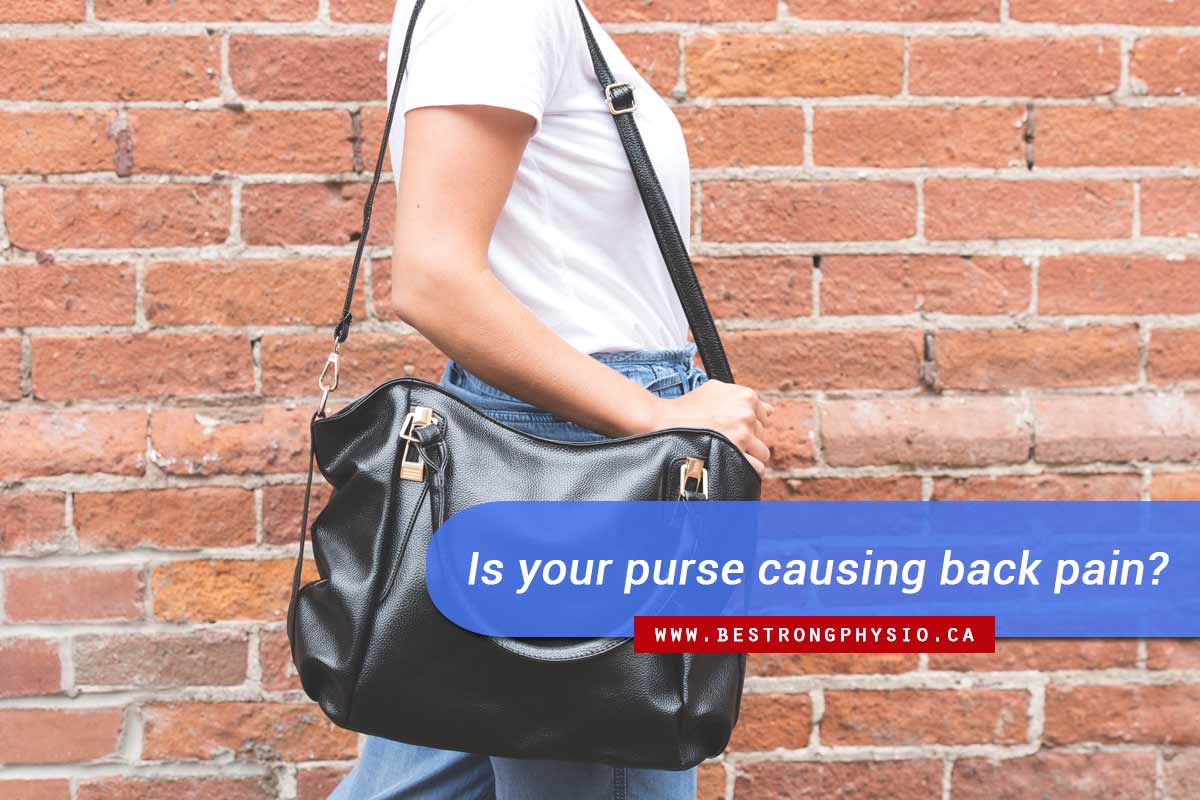How to Carry Your Purse/Bag and Avoid Pain
The bag you carry to work, school, and the gym could be causing you pain. Back pain is immensely common among Canadians; four out of five of us will experience at least one instance of severe back pain. The one thing most of us have in common? We carry purses, bags, briefcases, and luggage. The way we carry these bags can impact our posture, muscles, and eventually cause pain. If you want to stop experiencing back pain and prevent it in the future, you need to assess why you carry a purse/bag and how you’re carrying it. With the right practices and care, you can avoid pain from carrying a purse/bag.
Why Do I Have Pain?
The spine is sensitive to the rest of the body. An injury to any other part of the body can sometimes result in back pain. This is because when one body part is injured, the rest of the body has to compensate for it. It relies on symmetry and balance to feel secure and pain-free. Carrying a purse can throw off your body’s symmetry. Wearing a bag on your right shoulder all the time places extra weight on that side of your body, causing your muscles and spine to work harder keep your posture aligned. It’s similar to when you’re wearing high stiletto heels. Your body weight shifts forward onto your toes, and your spine has to adjust to stay balanced and centred.
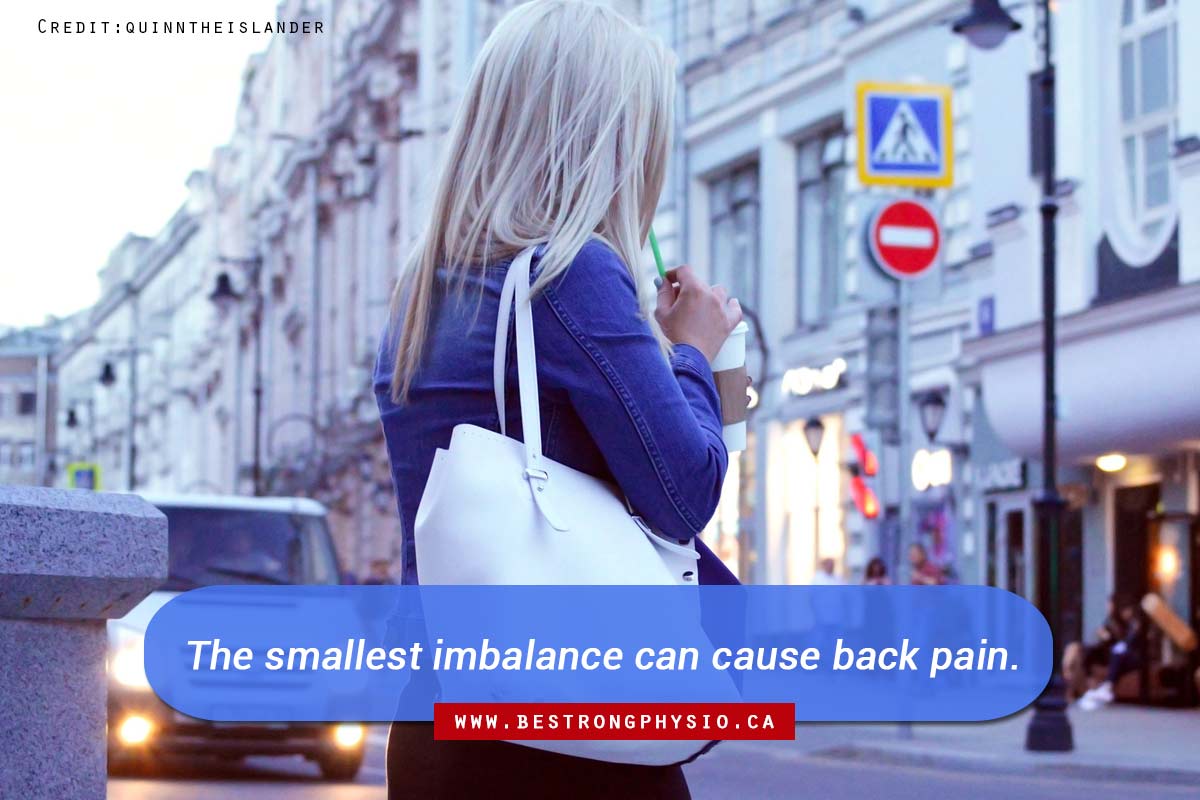
One key to avoiding back pain is maintaining symmetry and balance. Wearing your purse, handbag, or backpack correctly can help you avoid back pain caused by overworked muscles and other soft tissues. This is especially important during the winter months since cold temperatures can exacerbate back pain. Learn how to soothe sore muscles during the cold months to decrease back pain.
Bag and Purse Carrying Tips
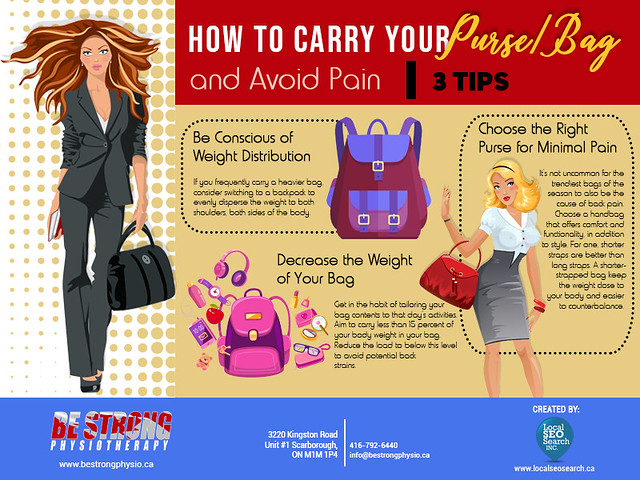
You may find that the purse you use is causing your back pain. Alternatively, it could be the way you carry or wear the bag that is causing the pain. Read the following tips to understand your purse-related back pain and remedy the situation.
1. Be Conscious of Weight Distribution
How thick are the straps on your purse or bag? The thinner the straps are, the less surface area they cover, and the less evenly the weight of the purse is distributed. Ideally, you want to spread the purse’s weight evenly and spaciously. This prevents one muscle group from carrying the most of the load, resulting in back pain. If you use a shoulder purse, consider a style with thicker straps. Be conscious of alternating the purse from one shoulder to the other so neither side of your body must bear the weight alone.
If you frequently carry a heavier bag, consider switching to a backpack. Many commuters choose a backpack over a purse or briefcase because of the pain. Packs are designed to evenly disperse the weight to both shoulders, both sides of the body. Although the load of the backpack is the same as with a briefcase or purse, the even weight distribution means that you’re less likely to experience pain from overcompensation on one side of your body.
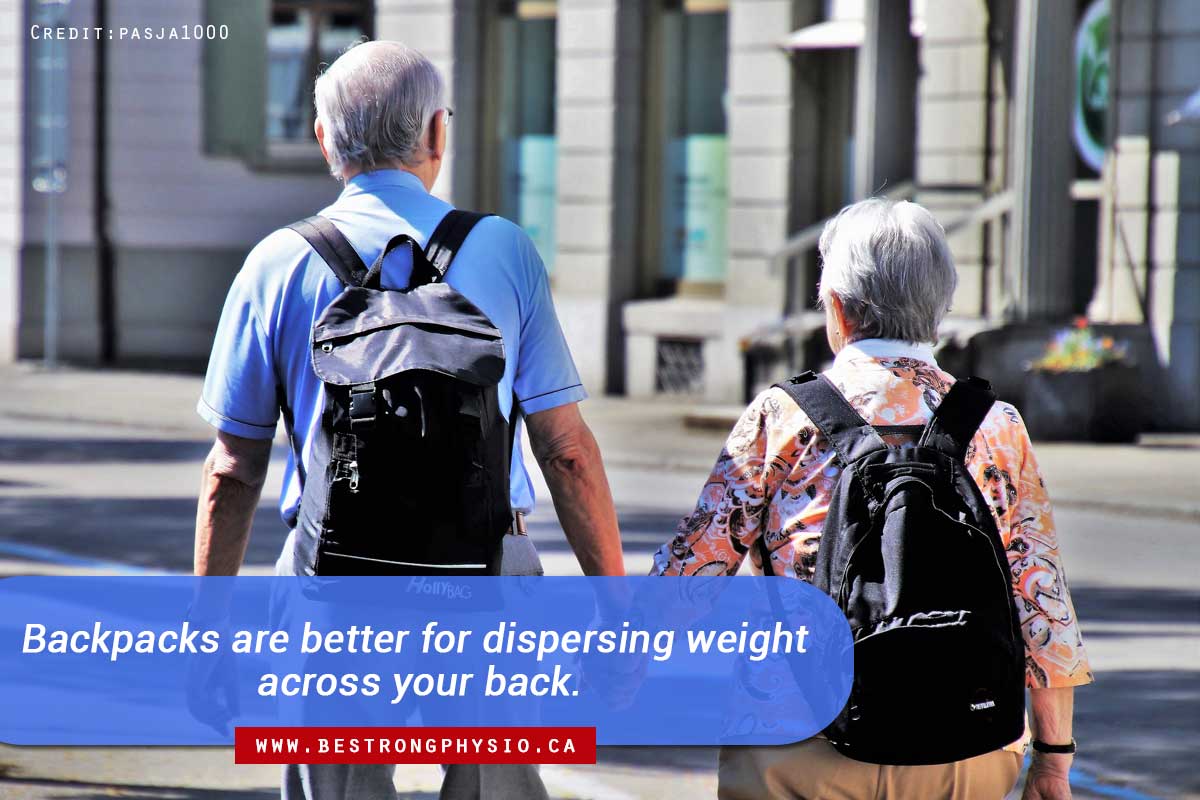
2. Decrease the Weight of Your Bag
If you’ve ever carried a toddler in a back harness before, you know how painful excessive weight on your back can be. It’s no different with a heavy backpack or purse. Ask yourself why your bag is so heavy. Unload every item in your bag onto a clean surface and analyze the reason you’re carrying each thing. You may be shocked by how many unnecessary items you take with you every day.
Get in the habit of tailoring your bag contents to that day’s activities. There’s no need to carry an umbrella if it’s going to be sunny all day. Gym shoes can be carried in a separate bag for when you’re going to the gym.
The suggested load for an adult backpack is the same as for a kid’s backpack: aim to carry less than 15 percent of your body weight in your bag. Reduce the load to below this level to avoid potential back strains.

Consider designating different bags for different outings–for example, use one for the gym and another for work. This divides the weight of the contents into two bags that don’t always get carried at the same time. If you wear a purse on one side, carry your lunch on the other. By limiting the weight in your bag you can decrease the pressure on your back.
3. Choose the Right Purse for Minimal Pain
It’s not uncommon for the trendiest bags of the season to also be the cause of back pain. Choose a handbag that offers comfort and functionality, in addition to style. There are a handful of characteristics that signify a bag is better for your back. For one, shorter straps are better than long straps. Purses with long straps distance the weight of the bag away from your body. This can cause you to hunch and lean to keep the bag balanced against your hip or waist. A shorter-strapped bag keeps the weight close to your body and easier to counterbalance.
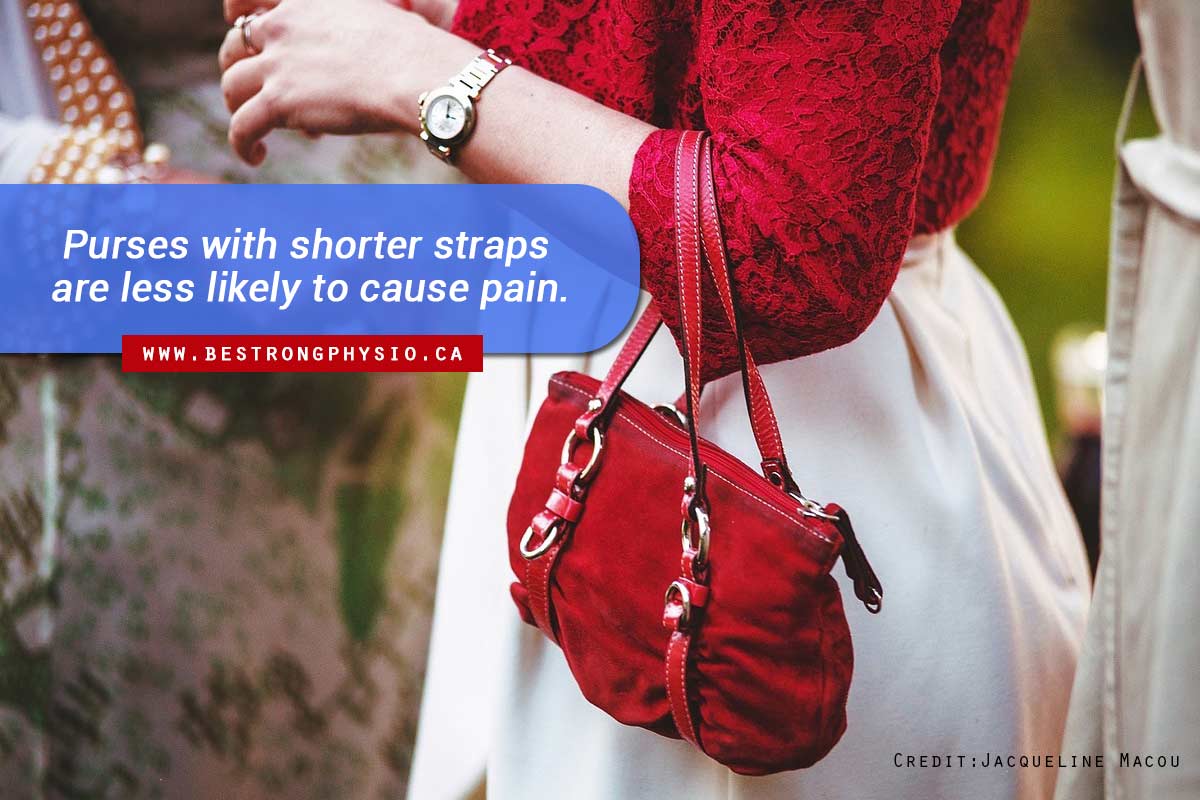
Although over-sized bags are in style, they aren’t convenient when trying to find your things. A large purse can get disorganized and lead to twisting of your spine to see the contents. If this is a rare occurrence, it shouldn’t be a problem. However, when your everyday purse is oversized, and you’re continually twisting you can suffer back pain. If possible, choose a smaller handbag with internal organizers and shorter straps.
How Physiotherapy Can Help
For some people with back pain caused by carrying a purse, physiotherapy can help. Physiotherapy is a form of treatment provided by qualified professionals to manually aid in the recovery from injury and discomfort. It can include services like massage therapy, chiropractic, and sports injury treatment.
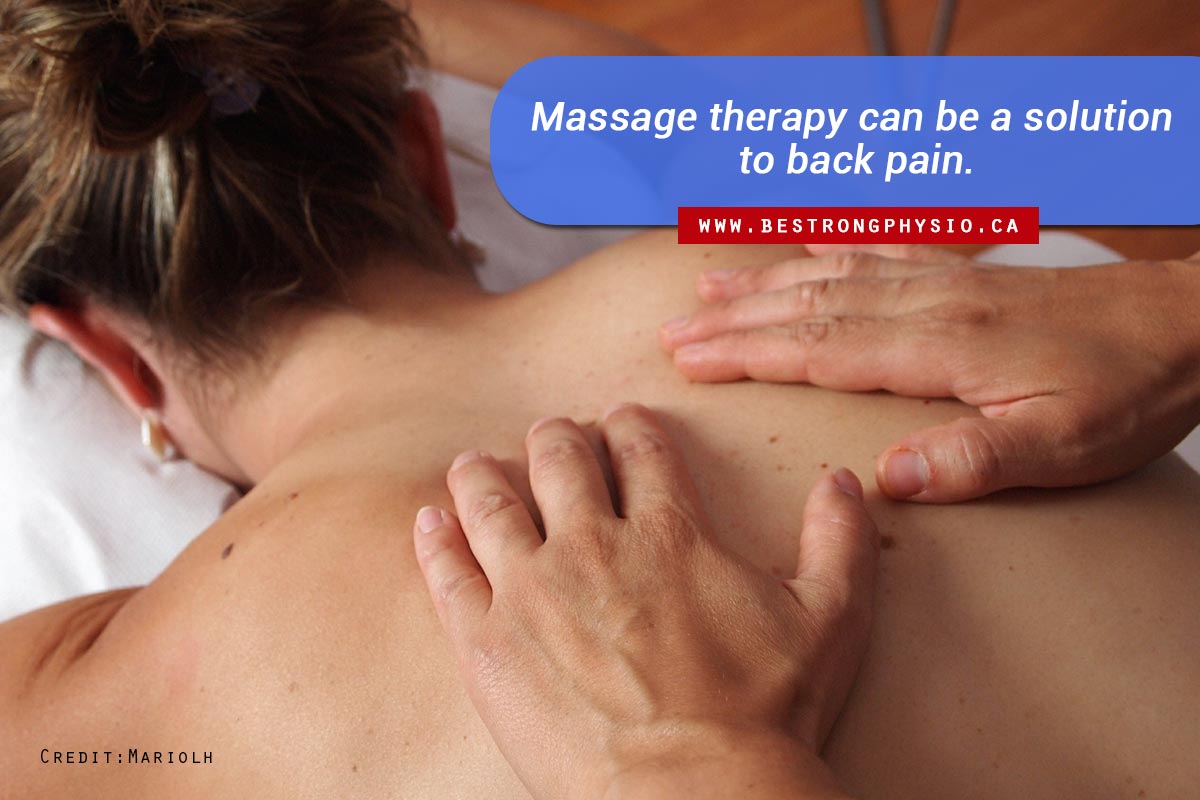
Physiotherapy is an excellent option for treating back pain caused by incorrectly carrying a purse or bag. You may have muscle strain from repeatedly carrying your bag on one side or headaches from how this strain has affected your spinal alignment. Massage therapy can reduce tensity the muscles, reduce stress, and boost blood flow to the area.
Chiropractic therapy can also address back pain caused by repetitive strain. For some purse-carriers, spinal alignment can become an issue. Chiropractors manipulate the musculoskeletal system to reduce the pressure and discomfort caused by misalignment. Your chiropractor can assess the bones and muscles in your back to deduce the cause of the pain and suggest appropriate treatments.
If you’re just starting to experience back pain, it’s best to consult with your doctor first. If the issue is musculoskeletal in nature, they will often prescribe physiotherapy to treat it. For some, physiotherapy can provide quick results; for others, ongoing therapy may be required, especially if you’ve carried your purse incorrectly for decades.
Be Strong Physio has been effectively reducing back pain related to strain and injuries for years. Our trained and experienced team of physiotherapists, massage therapists, and chiropractors in Scarborough are here to help. We know every case of pain is different and requires customized treatment. To book an appointment, please contact us or call 416-792-6440.





